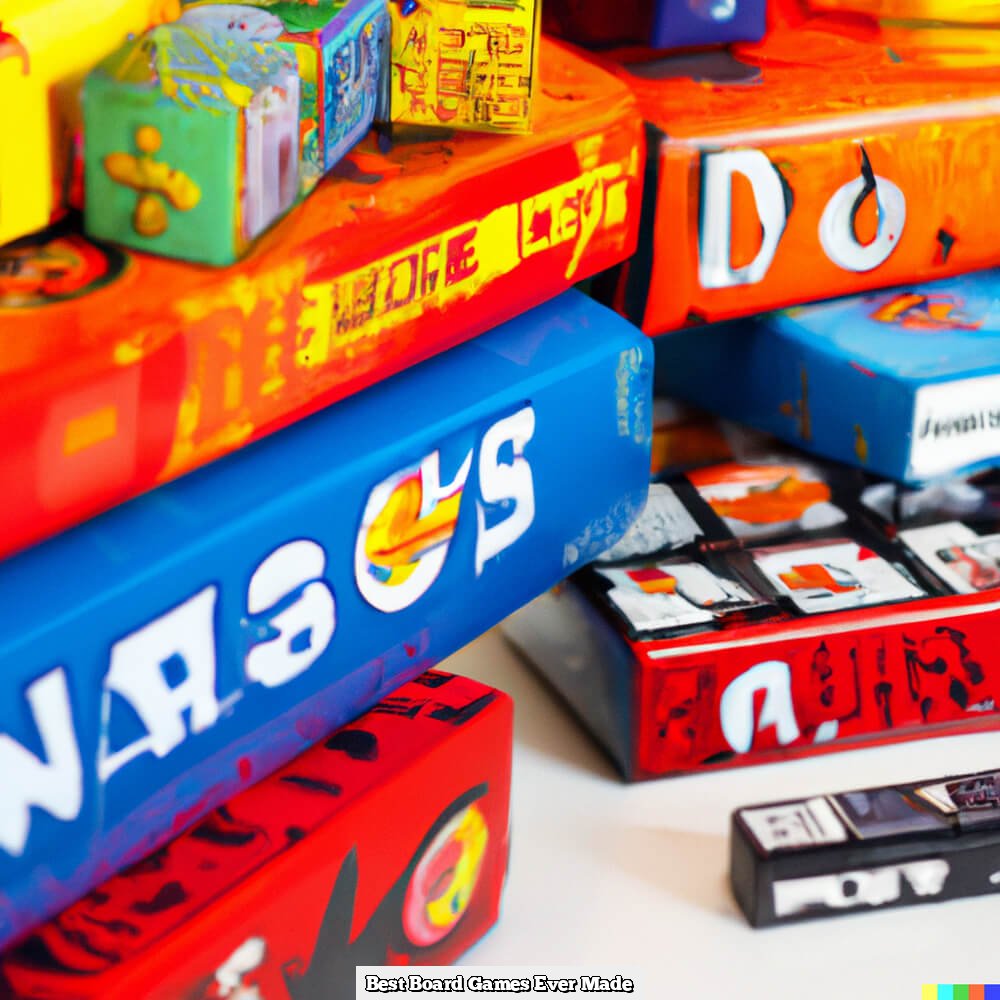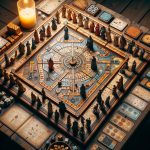Introduction to board game production
The process of producing a board game often starts long before the actual production. Before creating a product, creators need to design the components, mechanics, and artwork. This often involves creating prototypes or test versions to try out the game. Ultimately, this testing helps refine and polish the final product. Once the game is designed, creators make a prototype for evaluation and feedback from players who are unfamiliar with the game.
After gathering all of this information, production can begin. Depending on the size of the project, board games usually require some form of manufacturing – either self made or outsourced – which requires investment into materials such as cardboard sheets, counters, dice etc. Creators may also hire artists to create artwork for cards or boxes. Additionally, developers may look to crowdfunding platforms to help finance their projects.
Manufacturing a board game can be expensive but is vital for any creator who wants their game to have quality components and artwork that will make a good impression on potential customers. The importance of ensuring quality in every aspect of producing board games cannot be overstated; after all these games are typically played in close company with family and friends and an enjoyable experience depends on having components that function smoothly and artwork that creates a vivid experience as you play together.
Designing the board game
Once the theme and concept have been decided on, the production of the board game can begin. This section of board game manufacturing typically involves art and design, development of game mechanics and playtesting.
The art and design process begins by creating a basic layout for the board, along with tokens to represent players around it. The artwork must strike a balance between being attractive to draw in customers yet being functional for gameplay. Artwork is vital in attracting potential customers who may buy the game even if they don’t know much about it. Artists get creative with components such as highly detailed figurines that bring life to the game, or even adding rules written onto tiles or within books depending on how complex a game can be. Printing companies are enlisted to create intricate paper lithographs that add life to artwork within components such as cards or books based off of award-winning designs from professional graphic designers.
Game mechanics involve deciding what specific roles and actions will be played out by each component in an entertaining manner while considering rules that are both achievable yet challenging enough so gamers stay entertained. People who focus heavily in this stage must understand human psychology and emotions to ensure positive responses during playtested sessions. Tests include several different types of players ranging from vulnerable newcomers all the way to strategy game masters who can easily identify loopholes in rule structures while playing amongst others
Finally, the finished product should target particular groups and cultures relevant at launch time depending on initial marketing strategies thus far established prior during production stages of creation.
Prototyping the game
When creating a new board game, the first step taken is prototyping. This involves gathering all the materials needed to create the game, such as game boards, cards, pawns, dice, and any other components. A prototype of the game is then created so that it can be tested and tweaked through playtesting. The game is then brought to various groups of people to test out. Through trial and error they are able to learn which mechanics work best for the game and its theme. Having a number of testers also helps to give designers an idea of who their primary consumer demographic is likely to be. After making any necessary tweaks along the way, the prototype will finally become ready for mass production.
Manufacturing the game
The process of making a game begins with working with a game publisher. This is done to handle the design and distribution of the game, including finding customers and promoting it. The publisher will then work with the game designer to select materials for creating the game components. This can include anything from ordinary cardboard, to plastic pieces, or items like dice or playing cards. The materials may also need special finishes or coatings in order to make the necessary components look better and last longer.
Once those decisions are finalized, the manufacturer needs to be found to actually assemble and produce the games in bulk. Design consultations with manufacturers can help determine the best production techniques while staying within budget constraints. Once production begins, operations staff also need to prepare for filling orders efficiently by packaging products properly and shipping them according to expectations. Quality control is an important part of this process as well, as each unit should meet standards for uniformity and accuracy based on whichever materials have been chosen for manufacturing.
Finalizing the game
Finalizing the board game requires a carefully orchestrated series of steps to ensure that the game is ready for production and distribution. First, after the design of the game has been approved, the designer will work with manufacturers to produce a prototype sample which must meet all specifications required by the manufacturer’s standard. This includes selecting components such as cards, dice, playing pieces and boards. Once a prototype sample has been produced and approved, manufacturers can commence with the mass production. The next step for finalizing the board game involves transportation and shipping. Manufacturers often arrange for third-party shipping companies to deliver pre-assembled retail products directly to stores or customers. Lastly, it is essential that marketing efforts are in place prior to production so that potential consumers are aware of the available product. This may involve creating advertisements, brochures or other forms of communication to ensure broad awareness. All in all, much coordination is necessary when producing a board game in order to ensure its success among consumers!
Managing the game
Once the board game has been designed, it is important to have a plan as to how it will be managed. This includes customer service, customer support and feedback. It is especially necessary that customer service and support staff are well-informed about the game; knowing the rules and being able to answer customer questions about it in an efficient manner. Feedback should also be collected from customers in order to make any improvements necessary so the game can become even more successful than before. After thorough testing of the content, the finished product must be approved for mass production which requires marketing resources such as strategy for packaging, miniatures, packing materials etc. The right distribution channel must also be taken into consideration depending on where people need to purchase your game; whether it’s a physical retail location or online market place. Building a fan base by sharing updates through social media outlets would also help building up user engagement towards your board game and create brand recognition. So overall a solid handling strategy must me implemented throughout all stages of board game making process in order to make sure that customers’ needs are met and expectations are exceeded.
Conclusion
The process of making a board game generally involves several steps. The initial stage is conceptualizing and designing the game with a core concept, mechanics, and aesthetic elements in mind. Then there is playtesting to ensure the game works properly, before entering the pre-production phase where artwork, original components, and materials are produced. Applying for copyrights and other legal requirements can be completed at this time. Finally, many copies of the finalized game must be produced which will be presented to distributors and retailers who agree to market the product to the public.
To measure the success of a board game after it has been produced, factors like its sales performance and reviews from critics or gamers can be helpful indicators. Additionally, industry awards or recognition can signify a high-quality game that stands out amongst its competition. With this method of evaluation combined with customer feedback or surveys, as well as any post-production tweaks based on further testing or monitoring sales figures over time”game makers can determine how successful their efforts have been in creating a popular and enduring board game experience!

I love playing all kinds of games – from classics like Monopoly to modern favourites like Ticket to Ride.
I created this blog as a way to share my love of board games with others, and provide information on the latest releases and news in the industry.





